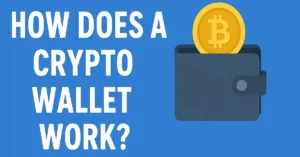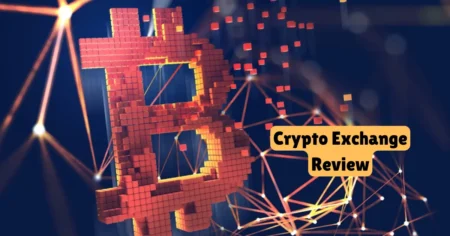Stablecoin comparisons
Introduction to Stablecoins
What Are Stablecoins?
Stablecoins are a unique breed of cryptocurrency designed to offer the best of both worlds: the speed and decentralization of crypto, combined with the reliability and predictability of fiat currencies. Essentially, a stablecoin is a digital asset pegged to a stable reserve asset, such as the US dollar, the euro, or even gold. This peg helps prevent the wild price swings that other cryptocurrencies, such as Bitcoin or Ethereum, are notorious for.
Think of them like digital dollars. You can send them across the world in seconds, use them in decentralized apps, and avoid worrying about waking up to find your holdings have dropped 20% overnight. This makes them incredibly useful for everything from international remittances to preserving value during crypto market crashes.
There are multiple ways stablecoins maintain their value. Some are backed by real-world assets held in reserve, while others use complex algorithms or crypto collateral to manage their supply. The idea is always the same—keep the value steady.
Why Do Stablecoins Matter in Crypto?
Stablecoins play a vital role in the crypto ecosystem. Without them, it would be a lot harder for users to avoid volatility. Whether you’re trading, saving, borrowing, or earning yield in DeFi (Decentralized Finance), stablecoins serve as a reliable medium of exchange and store of value.
For traders, stablecoins offer a convenient way to move in and out of volatile assets without cashing out into fiat. For businesses, they offer an easy way to accept payments without worrying about fluctuating token values. And for people in countries facing hyperinflation or limited banking access, stablecoins can serve as an economic lifeline.
On top of that, they form the backbone of most DeFi protocols. Need to provide liquidity, stake collateral, or earn interest? Stablecoins are often the preferred currency. Their importance keeps growing as real-world adoption of blockchain-based solutions accelerates.
Types of Stablecoins
Understanding the various types of stablecoins is essential if you want to make an informed decision about which one to use or invest in. Different stablecoins use different models to maintain price stability, and each comes with its pros and cons.
Fiat-Collateralized Stablecoins
Fiat-backed stablecoins are the most straightforward to understand. Each coin is backed by a fiat currency like USD, EUR, or GBP held in a bank account. That means for every stablecoin in circulation, there is an equivalent amount of fiat money held in reserve.
Popular examples include Tether (USDT), USD Coin (USDC), and TrueUSD (TUSD). These coins aim to stay at a 1:1 ratio with their underlying fiat currency. The advantage is simplicity and stability. They’re easy to understand, easy to trust (assuming regular audits), and usually enjoy good liquidity.
However, they’re not fully decentralized. Since reserves are managed by centralized entities, you need to trust that these companies have the assets they claim. There’s also some regulatory risk, as these issuers operate within the traditional financial system.
Crypto-Collateralized Stablecoins
These stablecoins are backed by other cryptocurrencies instead of fiat. The most well-known example is Dai (DAI), which is backed primarily by Ethereum and other crypto assets. Since crypto prices can be volatile, these stablecoins are often overcollateralized to absorb price shocks.
For instance, to mint $100 worth of DAI, you might need to deposit $150 worth of ETH. If the value of ETH drops too low, your collateral may be liquidated to maintain the peg.
Crypto-collateralized stablecoins offer more decentralization and align better with the ethos of the crypto movement. However, their complexity, reliance on volatile assets, and the risk of liquidation make them a bit trickier to manage.
Algorithmic Stablecoins
These stablecoins don’t rely on collateral at all. Instead, they use algorithms and smart contracts to control supply and demand, mimicking the way central banks manage monetary policy.
A well-known (and controversial) example is TerraUSD (UST), which attempted to maintain its peg through a system of minting and burning tokens alongside its sister coin, LUNA. The downfall of UST in 2022 highlighted the risks associated with algorithmic models, especially when they lack sufficient backing.
Despite that, innovation continues in this space. The idea is appealing: no need for fiat reserves or crypto collateral, just pure code. But trust in these models is still rebuilding after high-profile failures.
Commodity-Backed Stablecoins
As the name suggests, these stablecoins are pegged to the value of commodities like gold, oil, or even real estate. One popular example is Paxos Gold (PAXG), which is backed by physical gold stored in secure vaults.
These coins are great for investors who want exposure to physical assets in a digital format. They combine the stability of traditional commodities with the liquidity and transferability of crypto.
That said, they tend to be niche and not as widely used as fiat-backed or crypto-collateralized stablecoins. Also, trust is again an issue—you have to believe the issuer really holds the asset and can redeem the token at any time.
Most Popular Stablecoins in the Market
Now that we’ve covered the types of stablecoins, let’s take a closer look at the major players. Each has its unique features, strengths, and weaknesses.
Tether (USDT)
Tether is the oldest and most widely used stablecoin. It’s pegged to the U.S. dollar and backed by a mix of cash, commercial paper, and other reserves. Despite ongoing concerns over its transparency, Tether remains dominant, especially on exchanges with high trading volume.
Its popularity stems from its early mover advantage, high liquidity, and broad acceptance across the crypto ecosystem. However, it’s not without controversy—critics have raised issues about its reserve audits and regulatory compliance.
USD Coin (USDC)
USDC is issued by Circle and is considered one of the most transparent fiat-backed stablecoins. It regularly undergoes third-party audits and publishes reserve reports to back up its 1:1 peg with the U.S. dollar.
Many in the crypto space view USDC as a “safer” alternative to USDT, especially for regulatory-compliant DeFi projects. It’s widely used on major blockchains, including Ethereum, Solana, and Polygon.
Binance USD (BUSD)
BUSD is a USD-backed stablecoin issued by Paxos in partnership with Binance. Like USDC, it’s fully regulated and audited, making it a popular choice among users seeking transparency and compliance. It is approved by the New York State Department of Financial Services (NYDFS), which lends credibility to its operations.
What makes BUSD stand out is its seamless integration with Binance’s massive ecosystem. If you’re trading on Binance, using BUSD often comes with fee benefits and quicker settlements. It’s also available on multiple blockchains such as Ethereum and BNB Chain, boosting its versatility.
Despite its strengths, BUSD has faced scrutiny from U.S. regulators recently, leading to a wind-down of new issuance in early 2023. While it remains usable, its long-term viability as a top stablecoin is uncertain unless regulatory issues are fully resolved.
Dai (DAI)
DAI is a decentralized stablecoin managed by the MakerDAO protocol. Unlike USDT, USDC, or BUSD, DAI is not issued by a central company. Instead, users mint DAI by locking up crypto assets (like ETH, USDC, and others) in smart contracts.
Its decentralized nature is one of its biggest selling points, making DAI a cornerstone of many DeFi applications. It operates entirely on-chain and uses overcollateralization to maintain its 1:1 USD peg.
However, this system isn’t flawless. DAI’s peg can fluctuate slightly under extreme market conditions, and maintaining overcollateralization requires careful management by users. Plus, with increasing exposure to USDC as a reserve asset, some critics argue that DAI is slowly drifting toward centralization.
TrueUSD (TUSD)
TUSD is another USD-pegged stablecoin known for its strong emphasis on transparency. It’s issued by TrustToken and backed by dollar reserves held in third-party escrow accounts. TUSD undergoes frequent attestations from independent auditors, helping to build user confidence.
It has steadily grown in adoption due to its compliance-first approach and availability on a range of DeFi platforms. Unlike some of the older stablecoins, TUSD offers a more modern infrastructure for integrating fiat-backed tokens into the crypto world.
However, it still lacks the market penetration of giants like USDT or USDC. It’s more of a niche choice for users specifically looking for highly transparent, regulated alternatives.
Other Noteworthy Stablecoins
Besides the major players mentioned above, several other stablecoins deserve attention:
- Pax Dollar (USDP): Issued by Paxos, similar to BUSD but with broader usage outside Binance.
- Neutrino USD (USDN): Built on the Waves blockchain, but faced de-pegging issues in 2022.
- sUSD: A decentralized stablecoin from Synthetix, used mainly in synthetic asset trading.
- GUSD (Gemini Dollar): Created by the Gemini exchange, regulated and transparent, but with limited adoption.
- HUSD: Once popular but now largely faded due to loss of peg and support.
These options show how competitive and diverse the stablecoin landscape has become. Some focus on decentralization, others on regulation. Choosing the right one depends heavily on your use case—whether it’s trading, saving, yield farming, or making payments.
Stability and Collateralization Mechanisms
How Stability is Maintained
The fundamental value proposition of a stablecoin lies in its ability to maintain a consistent price. So, how do they stay “stable”? The answer depends on the type of stablecoin in question.
For fiat-collateralized stablecoins, stability comes from maintaining a 1:1 reserve of fiat currency. Every coin in circulation is backed by an equivalent amount of cash or cash equivalents held in a bank account. When a user wants to redeem their coins, the issuer destroys the tokens and returns the fiat.
Crypto-collateralized stablecoins use overcollateralization to protect against volatility. They lock up more value in crypto than they issue in stablecoins. Smart contracts automatically liquidate positions if collateral value drops too low, helping maintain the peg.
Algorithmic stablecoins use monetary policy-style algorithms. These algorithms burn or mint tokens to control supply based on demand. If the price rises above $1, the system increases supply. If it falls below $1, it reduces supply. The goal is to create economic incentives for traders to help bring the price back to the target peg.
The trick is that no method is foolproof. Real-world events, poor design, or loss of market confidence can break the peg. That’s why understanding how a stablecoin is structured is key to trusting its stability.
Transparency and Auditing of Reserves
Transparency is a major concern in the world of stablecoins. Users need to trust that the reserves exist. That’s why regular audits or attestations are so important.
USDC and TUSD, for example, conduct monthly attestations from top-tier accounting firms. These documents are publicly available and show that the reserves match the circulating supply. This builds trust and helps satisfy regulators.
USDT, on the other hand, has been criticized for inconsistent and opaque reserve disclosures. Although Tether now publishes more detailed reports, it still faces skepticism due to past legal issues and a lack of real-time transparency.
Some stablecoins take it a step further by providing proof-of-reserve systems. These use blockchain-based verifications, third-party custodians, and even oracles to confirm that reserves exist and are accessible. It’s a new frontier in building trust with users.
Ultimately, a stablecoin’s reliability depends on its ability to provide verifiable, consistent, and transparent information about its backing.
Regulatory Landscape
Global Regulation of Stablecoins
As stablecoins become more prominent, they’ve caught the attention of regulators worldwide. Their use in payments, lending, and DeFi creates both opportunities and risks, especially in terms of financial stability, consumer protection, and anti-money laundering (AML) compliance.
In Europe, the Markets in Crypto-Assets (MiCA) regulation includes provisions specifically aimed at stablecoins. Issuers must be authorized and follow strict transparency and reserve requirements. This marks a significant shift toward mainstream legitimacy for stablecoins.
Asia-Pacific countries have mixed responses. Japan has introduced legislation to allow regulated stablecoin issuance. Singapore takes a cautious but open approach, favoring innovation within a clear legal framework. China, meanwhile, bans most crypto activities altogether.
Globally, stablecoins are increasingly seen not just as crypto tools but as systemic financial instruments. That’s why international bodies like the Financial Stability Board (FSB) are pushing for coordinated regulation across jurisdictions.
U.S. Policies and Legal Oversight
In the United States, the regulatory environment remains a patchwork. The SEC and CFTC are still figuring out how to classify stablecoins—are they securities, commodities, or something else entirely?
The Stablecoin TRUST Act and other proposed bills aim to create a legal framework for fiat-backed stablecoins. These proposals would require issuers to hold full reserves, submit to regular audits, and get federal approval. Some would even limit issuance to banks or licensed institutions.
One major concern is the risk of a “run” on stablecoins—if users lose confidence, they might all try to redeem at once. This could trigger systemic issues, especially if reserves aren’t fully liquid. That’s why regulators want more disclosure and control over stablecoin operations.
Yet, the U.S. also sees potential in stablecoins. The Federal Reserve is exploring a Central Bank Digital Currency (CBDC), which would function similarly but under full government control. Until that’s ready, regulated stablecoins could fill the gap in digital payments and finance.
Use Cases and Applications of Stablecoins
Everyday Payments and Remittances
One of the most practical uses of stablecoins is facilitating everyday payments and cross-border remittances. In many parts of the world, sending money internationally is expensive and slow. Traditional services like Western Union charge high fees and can take days to process a transaction.
Stablecoins cut through this red tape. They enable instant, low-cost transfers across borders—whether you’re sending money to family overseas or paying freelancers abroad. The stability of these coins means recipients don’t need to worry about the value plummeting before they convert it.
Many small businesses and freelancers in countries with unstable currencies have started accepting stablecoins to preserve their earnings. It’s also easier to onboard people who don’t have access to traditional banking infrastructure—just a mobile phone and a crypto wallet is enough.
This utility is particularly valuable in developing nations where inflation is rampant, and the local currency loses value daily. Stablecoins provide a digital dollar equivalent, offering financial stability that local currencies often can’t.
DeFi Ecosystem and Yield Farming
Stablecoins are the backbone of the Decentralized Finance (DeFi) ecosystem. From lending and borrowing to liquidity mining and staking, almost every DeFi protocol supports or revolves around stablecoins.
For example, platforms like Aave or Compound let users lend their stablecoins and earn interest. Unlike savings accounts at traditional banks, which offer paltry returns, DeFi protocols can provide double-digit annual percentage yields (APY) depending on market conditions.
Similarly, stablecoins are used in liquidity pools on decentralized exchanges (DEXs) like Uniswap and Curve. These pools power decentralized trading, allowing users to swap tokens without intermediaries. Liquidity providers (LPs) who stake stablecoins earn fees and sometimes governance tokens.
Yield farming and staking strategies often involve stablecoins because they’re low-risk compared to volatile crypto assets. That said, DeFi isn’t risk-free—smart contract bugs, rug pulls, and sudden market crashes can still lead to losses. But for savvy users, stablecoins provide an appealing mix of safety and earnings potential.
Tokenized Assets and Synthetic Finance
Stablecoins are also fueling innovations in tokenized assets and synthetic finance. By using them as collateral or denominators, platforms can issue synthetic versions of stocks, commodities, and other assets. For instance, you could buy a synthetic Tesla share or a gold derivative backed by stablecoin collateral.
This creates new financial products that are accessible to anyone with an internet connection. No need to go through stockbrokers or banks—you can trade synthetic assets 24/7 on decentralized platforms.
Moreover, stablecoins are essential in creating tokenized real estate, fractional ownership models, and on-chain treasury management. Projects are building real-world asset exposure on blockchain rails, and stablecoins are the fuel powering these engines.
Risks and Challenges of Stablecoins
Peg Stability and Market Confidence
One of the biggest challenges for stablecoins is maintaining their peg. If a stablecoin breaks its peg, even briefly, it can cause panic and mass sell-offs. We saw this dramatically with TerraUSD (UST) in 2022, which lost its peg and triggered a cascade of losses across the crypto market.
Confidence is everything. Even if a stablecoin is technically sound, it can depeg if users lose trust in the system. That’s why transparency, governance, and liquidity are so critical.
Algorithmic stablecoins are especially vulnerable to this. Unlike fiat-backed coins, they depend on game theory and market incentives to maintain their peg. If those incentives fail or are manipulated, the entire system can unravel quickly.
Centralization vs. Decentralization
Stablecoins often face a trade-off between security and decentralization. Fiat-backed coins like USDC and USDT are centralized—they’re controlled by companies and rely on banks to hold their reserves. This makes them easier to regulate and more transparent, but also exposes them to censorship and government control.
On the other hand, decentralized stablecoins like DAI or Frax offer more autonomy and align with crypto’s ethos. But they’re also more complex, vulnerable to market volatility, and reliant on decentralized governance—which can be slow and inefficient.
The future might lie in hybrid models that combine the best of both worlds. However, striking the right balance remains one of the biggest challenges for stablecoin developers.
Regulatory Risk and Government Competition
Stablecoins are on regulators’ radars like never before. While some governments are working to regulate them, others see them as a threat to monetary sovereignty. Countries like China have outright banned private stablecoins in favor of state-backed Central Bank Digital Currencies (CBDCs).
There’s also the risk of increased regulatory pressure in the U.S. and Europe, where stablecoin issuers might be required to register as banks or submit to strict capital requirements. While this could make stablecoins safer, it could also limit innovation and exclude smaller players from the market.
Governments are also launching their CBDCs to compete with private stablecoins. The rise of digital euros, yuan, and dollars could change the landscape dramatically—possibly reducing the need for private coins entirely.
Comparing Stablecoins: A Feature-by-Feature Breakdown
To help you choose the right stablecoin, here’s a comparison table highlighting key features of the top five:
| Feature | USDT | USDC | DAI | BUSD | TUSD |
|---|---|---|---|---|---|
| Type | Fiat-backed | Fiat-backed | Crypto-backed | Fiat-backed | Fiat-backed |
| Issuer | Tether Ltd | Circle | MakerDAO | Paxos/Binance | TrustToken |
| Transparency | Moderate | High | High | High | High |
| Decentralized | No | No | Yes | No | No |
| Blockchain Support | Multi-chain | Multi-chain | Ethereum-based | Ethereum, BNB | Multi-chain |
| Audits | Irregular | Monthly | On-chain | Monthly | Monthly |
| Regulation | Limited | Compliant | DAO-Governed | NYDFS Approved | Compliant |
When evaluating stablecoins, consider:
- Trust in the issuer
- Level of decentralization
- Use case (trading, saving, DeFi, remittances)
- Liquidity and integration with the apps you use
No stablecoin is perfect, so the best choice often depends on your priorities.
Future of Stablecoins
Growth Outlook and Innovations
Despite market turbulence, the stablecoin sector continues to grow. With more users entering the crypto space, the demand for a reliable, dollar-equivalent digital currency is only increasing.
We’re likely to see innovation in areas like:
- Real-time proof-of-reserves
- Cross-chain interoperability
- Programmable stablecoins for automated financial operations
- Privacy-focused stablecoins that don’t compromise regulation
New protocols are also exploring AI-powered monetary policies for algorithmic stablecoins, better yield optimization engines for stablecoin farming, and more inclusive on-ramps for global users.
The future is not just about pegging to the U.S. dollar. We might see euro-pegged, yen-pegged, or inflation-resistant stablecoins tailored for specific regions or economic conditions.
Conclusion
Stablecoins have carved out a crucial role in the digital economy. They provide a vital bridge between traditional finance and decentralized innovation, offering stability, liquidity, and accessibility in a volatile ecosystem. But not all stablecoins are created equal.
Understanding the differences between fiat-backed, crypto-backed, and algorithmic models is key to choosing the right one. From USDT and USDC’s liquidity and transparency, to DAI’s decentralized power and BUSD’s exchange-native integration, each coin serves a different purpose.
As regulation evolves and innovation accelerates, stablecoins will likely remain a core pillar of crypto finance. But always do your homework. Examine the peg, the reserves, the team, and the community. Because in the world of stablecoins, trust is everything.
FAQs
What is the safest stablecoin to use?
USDC is considered one of the safest due to its transparency, regulatory compliance, and regular audits. DAI is also a strong choice for those who prioritize decentralization.
Can stablecoins lose value?
Yes, stablecoins can lose their peg due to poor management, market shocks, or loss of confidence. Always choose coins with strong reserve backing and proven track records.
Are stablecoins legal?
Stablecoins are legal in many countries but increasingly regulated. Compliance requirements vary based on jurisdiction and the type of stablecoin.
How do stablecoins earn yield in DeFi?
Users can lend stablecoins, provide liquidity, or stake them in yield farms. Returns vary depending on the platform and market demand.
Will Central Bank Digital Currencies replace stablecoins?
CBDCs may coexist with or compete against stablecoins. Private stablecoins offer flexibility and innovation, while CBDCs offer state-backed trust and legal certainty.
Also, read
- What is a Crypto Wallet and How Does It Work? – Coinsify
- 10 Crypto Terms Every Beginner Must Know – Coinsify
- What is Blockchain Technology – Complete Guide – Coinsify
- How to Buy Crypto Safely in 2025 – Complete Guide – Coinsify
- Bitcoin vs Ethereum: Key Differences Explained – Complete Guide
- Ultimate Blockchain Glossary: Learn Blockchain Terms Easily
- How to Buy Bitcoin Safely (Complete Beginner’s Guide)
- Top 10 Crypto Wallets for Beginners (2025 Edition)
- What is Cryptocurrency? A Beginner-Friendly Guide (2025)






